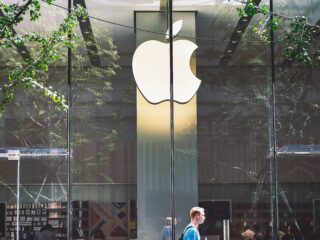
Nostalgia is a powerful emotion that can transport us back to a simpler time when life seemed less complicated. Branding professionals have found that leveraging this sentiment can be a potent strategy for establishing a brand’s identity and forging emotional bonds with customers.
Nostalgia branding is the practice of using images, sounds, and other sensory cues to evoke feelings of nostalgia and connect with consumers on a deeper level. It’s a strategy that has proven to be incredibly effective, particularly with millennials and Gen Xers who have a strong connection to the pop culture of the 80s and 90s.

So why do we love nostalgia branding so much? For starters, it’s a way to tap into positive emotions and memories of the past. Whether it’s the music, the fashion, or the advertising jingles, these sensory cues transport us back to a time when life was simpler and more carefree.
But nostalgia branding is about more than just eliciting warm and fuzzy feelings. It’s also a way for brands to tap into our collective memories and create a sense of shared experience. By using images and references that are familiar to a wide audience, brands can create a sense of connection and community that goes beyond their products.

Take Coca-Cola, for example. The brand has been using nostalgia branding for decades, evoking memories of its iconic “I’d Like to Buy the World a Coke” commercial from the 1970s. The brand has also released limited-edition packaging featuring retro designs, which tap into consumers’ memories of the classic glass bottle and the brand’s long history.

Lego is another brand that has successfully used nostalgia branding to connect with consumers. The company has released retro sets featuring classic designs and characters, tapping into consumers’ fond memories of playing with Lego as children. By embracing its history and tapping into the nostalgia of its fans, Lego has been able to create a strong emotional connection with consumers that goes beyond just its products.

Disney is yet another brand that has tapped into nostalgia branding to create a deep emotional connection with consumers. The company has released remakes of classic movies like The Lion King and Aladdin, bringing beloved characters back to the big screen for a new generation of fans. Disney has also created retro merchandise featuring classic designs and characters, evoking memories of childhood trips to Disney theme parks and movies.

So what can we learn from nostalgia branding? For starters, it’s a reminder that emotions matter in branding. By tapping into positive emotions and memories of the past, brands can create a deeper connection with consumers that goes beyond product features and benefits.
But nostalgia branding also requires a delicate balance. Brands that rely too heavily on nostalgia can come across as stale and out of touch. And nostalgia branding can also backfire if it’s not done authentically, with consumers seeing through the branding ploy and feeling manipulated.

Ultimately, the power of nostalgia branding lies in its ability to tap into universal emotions and create a sense of shared experience. By using images and references that are familiar to a wide audience, brands can create a connection with consumers that goes beyond product features and benefits. And in a world where consumers are bombarded with advertising messages, that connection can be a powerful tool for building brand loyalty and driving sales.
Sarah Wilkinson
CEO/Creative Director
Follow Along on Our Social Media




